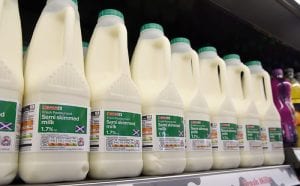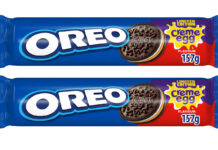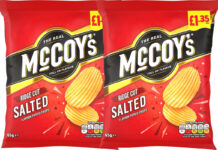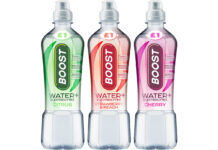Times are tough in many parts of the milk chain and retail prices are fiercely competitive. It makes it all the more important to get the basics right.
MILK was once said to one of the single-most profitable categories in convenience retailing, a daily essential where freshness and availability were demanded and valued by shoppers.
The requirement for freshness and availability remains, of course. But after a long price war where supermarkets, discounters and pound shops have fought it out to the point where four pints of semi-skimmed is now selling for under £1 and some 2-litre prices have gone below 80p, consumer valuation of milk may well have changed forever.

The situation has hit dairy farmers hard, has coincided with significant consolidation among giant milk processors and some plant closures and, of course, hasn’t made it easy for c-store milk sales.
But on the other hand it has also seen significant investment and innovation in other areas of dairy – everything from flavoured milk, butter, and ice cream to quark – by major milk producers and attempts to use packaging and promotion to make milk more relevant to modern consumer lives – in the growing food-to-go scene, for example.
So how should a c-store respond to the current milk market?
Well, the major firms generally agree that it’s probably even more important than before to get the milk merchandising basics right.
That means having milk chillers in prominent, easily-seen locations in stores.
Availability as ever is key, organising good stock and good stock rotation will help ensure a store gains a reputation as a reliable source of fresh milk, important at a time when more people are ready to use c-stores as a regular top-up shopping venue.
But think of range too. Milk has recently gained accolades as a better source of hydration than sports drinks for athletes and workout fans so it could be worth highlighting smaller, single-serve and on-the-go packs of low fat milk and low-sugar flavoured milk.
Organic milk maintained sales well during tough economic times and it remains one of the most popular of organic products. So some stores might benefit from stocking organic.
And, while there is undoubtedly a fierce price war going on, a few supermarket schemes have shown that some shoppers at least are willing to pay more if they feel the farmers behind the milk are getting a fair price.
So if you stock locally produced milk you should probably highlight the fact.
Flavoured milks are seen by some parents as a healthier drink for youngsters and could do well also in stores where there’s a school lunch time trade.
And as well as stocking
flavoured and other single-serve milks in the milk chiller they could well justify a place in chilled food-to-go fixtures, perhaps as part of meal
deals.
If your supplier provides it then it’s probably wise to include at least one fighting brand, probably in a 2-litre size, that can get close to some of the cheap milk prices that are currently the norm in supermarkets.
But by making more of all the other types and sizes of milk that are available convenience stores can help ensure that the retail milk market doesn’t simply become a category that’s defined by the question “How low can you go?”.


















